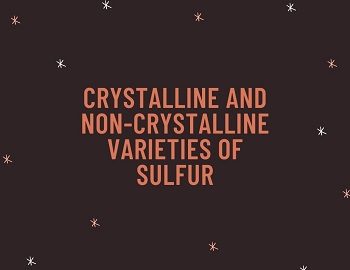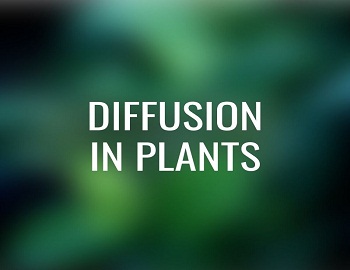Table of Contents
Crystalline and Non-Crystalline Varieties of Sulfur:
Crystalline Varieties of Sulfur:
Rhombic Sulfur:
This is also called octahedral sulfur. It is a stable form of sulfur.
Preparation: Some flowers of sulfur are dissolved in carbon disulfide taken in a china dish. The resulting solution is filtered rapidly. The filtrate is allowed to evaporate slowly in the open air. Octahedral crystals of rhombic sulfur are obtained.
Properties of Rhombic Sulfur:
- It is the only form of sulfur which is stable at below 95.6°C.
- It is soluble in organic solvents like benzene, carbon disulfide but is insoluble in water.
- Its specific gravity is 2.05.
- At above 95.6°C, it changes into monoclinic form.
- It forms beautiful pale yellow octahedral crystals.
- It is a bad conductor of heat and electricity.
Monoclinic Sulfur:
This is also known as prismatic sulfur. It is stable between 95.6°C and 120°C.
Preparation: Some flowers of sulfur are melted in a china dish. The liquid sulfur is allowed to cool slowly till a solid crust is formed on the surface. A hole is made in the crust by means of a glass rod and the molten sulfur is poured out through this hole by inverting the dish. Needle-shaped crystals of monoclinic sulfur are obtained.
Properties of Monoclinic Sulfur:
- It is unstable at ordinary temperature and changes into rhombic variety on long-standing.
- It forms yellow needle-shaped crystals.
- It is soluble in carbon disulfide but is insoluble in water.
- Its specific gravity is 1.93.
- It melts at about 120°C.
- It is stable between 95.6°C and 120°C.
- The crystals of monoclinic sulfur are transparent and yellow in colour.
Non-Crystalline Varieties of Sulfur:
Plastic Sulfur:
This is a non-crystalline (amorphous) variety of sulfur.
Preparation: Some flowers of sulfur are heated in a boiling test tube until sulfur starts boiling. The boiling sulfur is then poured into cold water for rapid cooling and plastic sulfur is formed. It is an elastic, rubber like variety of sulfur.
Properties of Plastic Sulfur:
- It is an unstable variety of sulfur at ordinary temperature and it gradually changes into a rhombic variety.
- It is brownish yellow in colour and amorphous in nature.
- It is insoluble in carbon disulfide as well as in water.
- Its specific gravity is 1.95.
- It does not possess any sharp melting point.
- It is stable above 114°C and changes into rhombic sulfur on long-standing.
- It is elastic like India rubber and can be drawn into a flexible thread.
Milk of Sulfur:
This is a non-crystalline variety of sulfur.
Preparation: It is obtained by boiling sulfur with milk of lime Ca(OH)2 and the resulting product (calcium pentasulfide) is decomposed by concentrated HCl.
3Ca(OH)2 + 12S ——–> 2CaS5 + CaS2O3 + 3H2O
CaS5 + 2HCl ——–> CaCl2 + H2S + 4S
Properties of Milk of Sulfur:
- It is white amorphous solid.
- It is soluble in carbon disulfide but is insoluble in water.
- Its specific gravity is 1.82.
- On heating or long-standing, it changes into a rhombic variety of sulfur.
- It is used in medicines.
Colloidal Sulfur:
This is an amorphous variety of sulfur. It is colloidal in nature.
Preparation: It is obtained by passing hydrogen sulfide(H2S) through chlorine water or dilute nitric acid (HNO3).
Properties of Colloidal Sulfur:
- It is amorphous in nature.
- On heating or on long standing, it changes into rhombic variety of sulfur.
- It consists of fine particles of sulfur dispersed in water and is capable of passing through ordinary filter paper.
- It is used in medicines.
Further, the various allotropic forms of sulfur are chemically similar. This is proved by taking equal weights of the different varieties of Sulfur and burning then in excess of oxygen. Under similar conditions of temperature and pressure, these allotropic forms yield the same volume of sulfur dioxide showing that all the allotropic forms of sulfur are chemically the same.
- Human Genome Project
- Homologous Analogous And Vestigial Organs
- Lamarckism And Neo-Lamarckism
- Darwinism or Theory of Natural Selection
- Constituents of Food: Carbohydrates, Proteins, Fats & Vitamins
- Asexual Reproduction- Types, Characteristics And Significance
- Vegetative Propagation: Natural & Artificial Methods
- Absorption, Transport and Water Loss in Plants– NIOS









Comments (No)